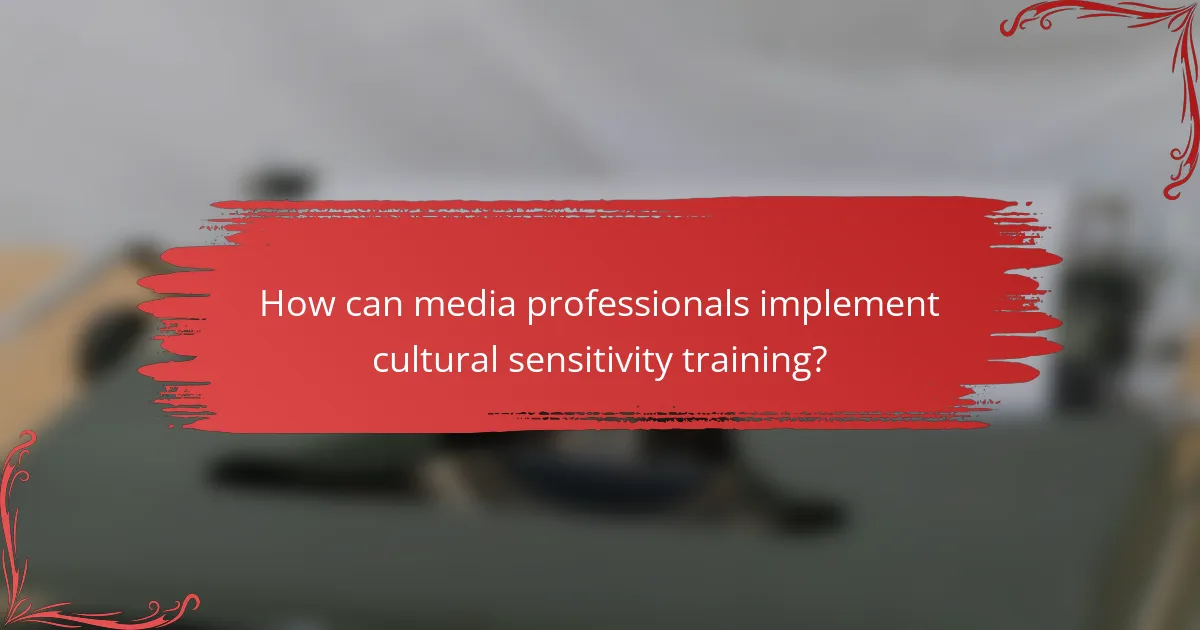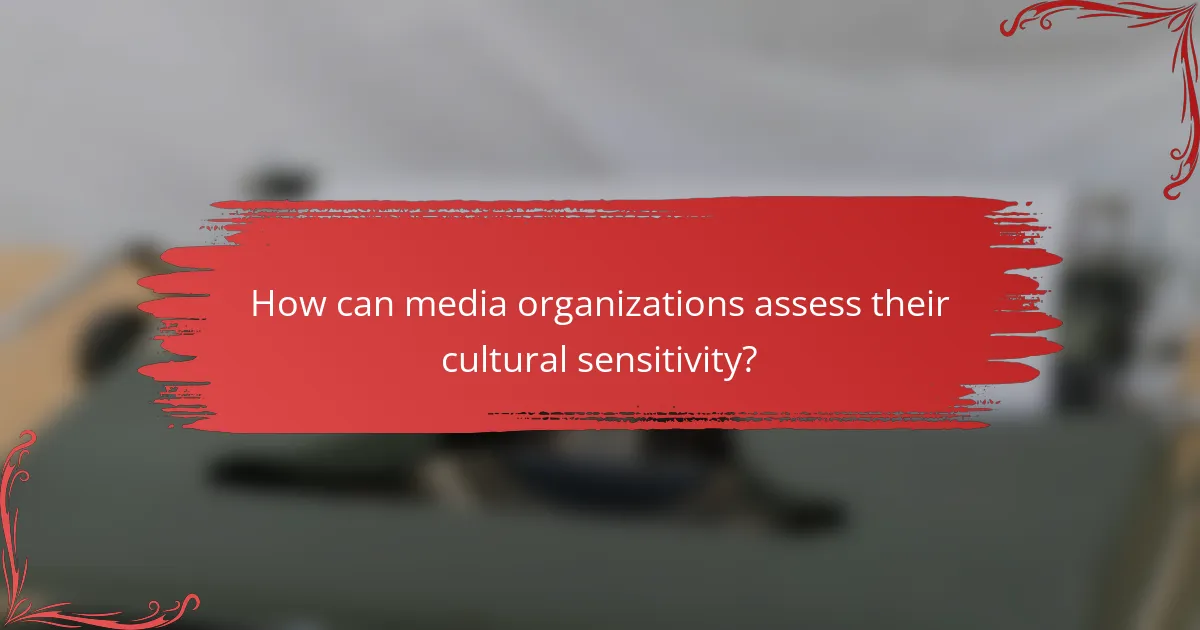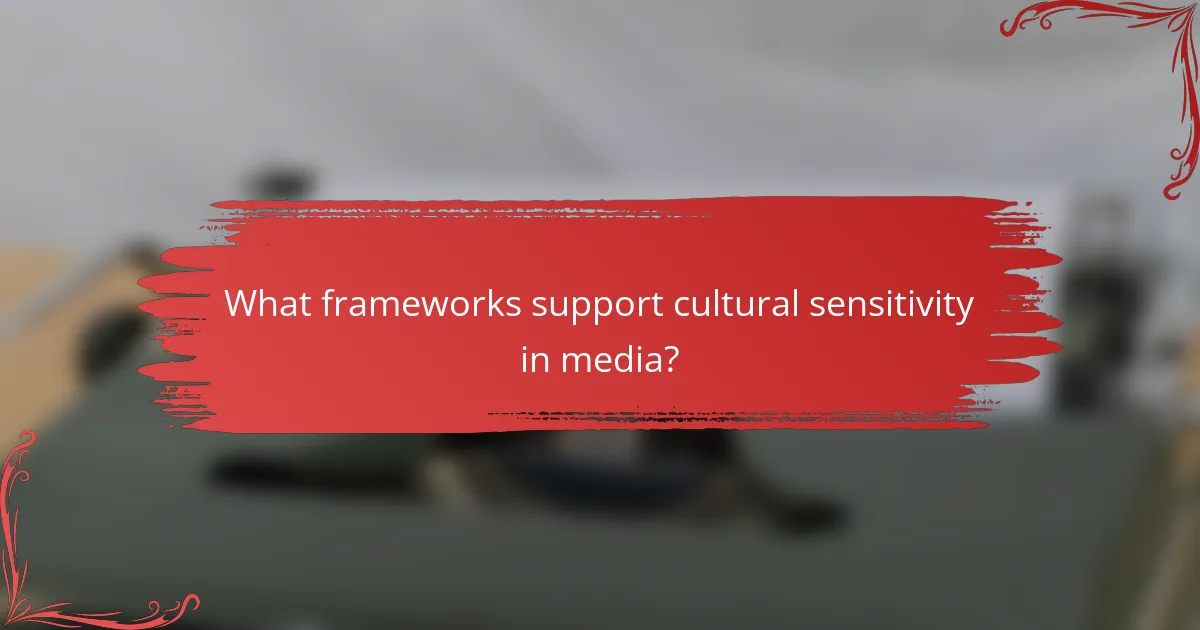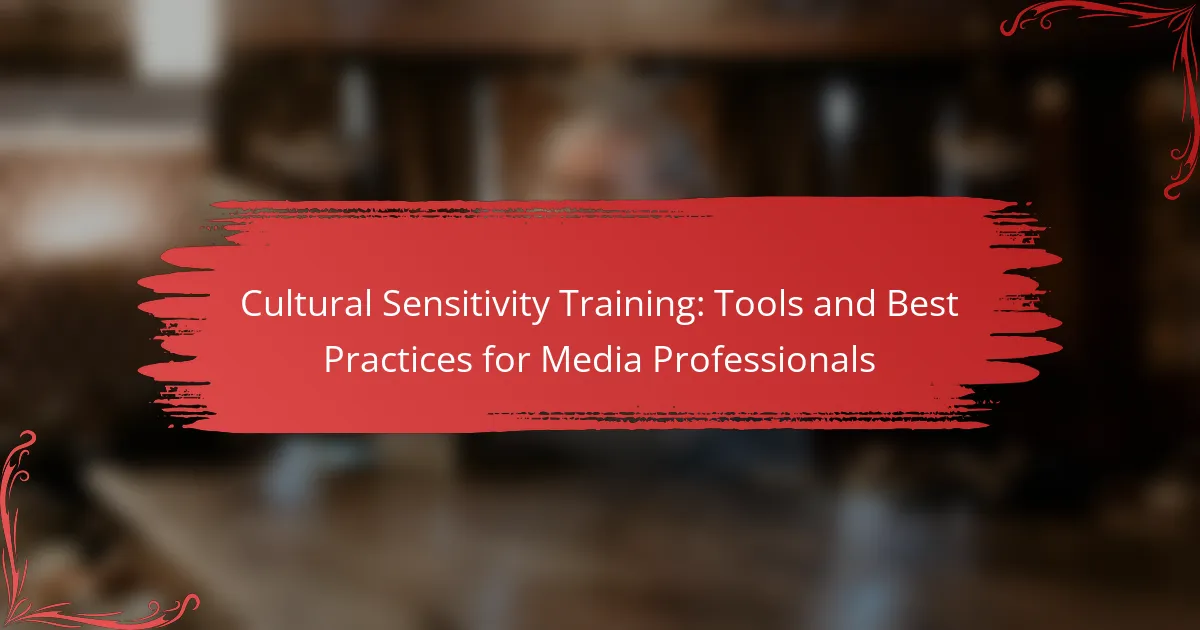Cultural sensitivity training is essential for media professionals to foster respect and understanding of diverse cultures. By utilizing effective tools such as online platforms and interactive workshops, media teams can enhance their communication skills and create more inclusive content. Implementing these practices not only improves the quality of media but also helps prevent cultural misunderstandings, promoting a more inclusive environment for all. Tailoring training to specific audience needs and encouraging open dialogue are key best practices for success.

What are effective tools for cultural sensitivity training in media?
Effective tools for cultural sensitivity training in media include online training platforms, interactive workshops, assessment tools, and resource libraries. These tools help media professionals understand diverse cultures and improve their communication skills, ultimately leading to more respectful and inclusive content creation.
Online training platforms
Online training platforms offer flexible learning options for media professionals seeking cultural sensitivity training. These platforms often include video modules, quizzes, and discussion forums, allowing users to learn at their own pace. Popular platforms like Coursera and Udemy provide courses tailored to media contexts, covering topics such as bias recognition and inclusive storytelling.
When selecting an online platform, consider the course content, duration, and user reviews. Many platforms offer free trials or low-cost options, making it easier to explore various training materials without a significant financial commitment.
Interactive workshops
Interactive workshops provide hands-on experiences that enhance cultural sensitivity among media professionals. These workshops typically involve role-playing, group discussions, and case studies, encouraging participants to engage actively with the material. They can be conducted in-person or virtually, catering to different learning preferences.
To maximize the effectiveness of these workshops, ensure they are facilitated by experienced trainers who understand the nuances of cultural sensitivity. Look for workshops that include diverse perspectives and encourage open dialogue, as this fosters a deeper understanding of cultural issues.
Assessment tools
Assessment tools help evaluate the effectiveness of cultural sensitivity training by measuring knowledge and attitudes before and after training sessions. Surveys, quizzes, and self-assessment questionnaires can provide valuable insights into areas needing improvement. These tools can also track progress over time, helping organizations identify trends and adjust training approaches accordingly.
When implementing assessment tools, ensure they are culturally relevant and designed to address specific media contexts. Regularly reviewing assessment results can inform future training initiatives and highlight areas for further development.
Resource libraries
Resource libraries serve as valuable repositories of materials related to cultural sensitivity in media. These libraries may include articles, research papers, case studies, and multimedia resources that professionals can access for ongoing learning. Many organizations and educational institutions maintain online resource libraries that are free to use.
To make the most of resource libraries, regularly explore new materials and share relevant findings with colleagues. Curating a list of essential resources can also help streamline access to important information, fostering a culture of continuous learning within media organizations.

How can media professionals implement cultural sensitivity training?
Media professionals can implement cultural sensitivity training by incorporating it into their regular practices and ensuring that all team members understand and respect diverse cultures. This training fosters an inclusive environment and enhances the quality of media content by preventing cultural misunderstandings.
Integrate training into onboarding
Integrating cultural sensitivity training into the onboarding process ensures that new hires understand the importance of cultural awareness from day one. This can include a dedicated module that covers key concepts, terminology, and the impact of cultural representation in media.
Consider using interactive elements such as quizzes or role-playing scenarios to engage new employees. This approach not only informs but also encourages them to think critically about their responsibilities in portraying diverse cultures accurately.
Conduct regular workshops
Regular workshops on cultural sensitivity can reinforce training and keep the topic fresh in the minds of media professionals. These workshops should be scheduled at least quarterly and can cover various themes, such as current events, evolving cultural norms, or specific cultural groups.
Invite guest speakers from diverse backgrounds to share their experiences and insights. This personal touch can deepen understanding and promote empathy among team members, making the training more impactful.
Utilize case studies
Utilizing case studies allows media professionals to learn from real-world examples of cultural representation, both positive and negative. Analyzing these cases can highlight the consequences of cultural insensitivity and the benefits of respectful representation.
Choose case studies relevant to the local context, such as notable media incidents within the region. This relevance can enhance engagement and provide practical lessons that professionals can apply in their own work.

What are the best practices for cultural sensitivity training?
The best practices for cultural sensitivity training focus on creating an inclusive environment that respects diverse backgrounds. Effective training should be tailored to the specific needs of the audience, promote open dialogue, and include methods for measuring its impact.
Tailor content to specific audiences
Customizing training content to fit the specific demographics and cultural backgrounds of the audience is essential. This approach ensures that the material resonates and addresses relevant issues, making it more effective. For instance, media professionals working in a multicultural city should include examples and case studies that reflect the local community.
Consider conducting a needs assessment before developing training materials. This can involve surveys or focus groups to identify the unique cultural dynamics and sensitivities of the audience, allowing for a more targeted training experience.
Encourage open discussions
Facilitating open discussions during training sessions fosters a safe space for participants to share their experiences and perspectives. This dialogue can help uncover biases and promote understanding among team members. Encourage participants to ask questions and express their thoughts without fear of judgment.
Incorporating role-playing exercises or scenario-based discussions can enhance engagement. These activities allow participants to practice responding to culturally sensitive situations, reinforcing learning through practical application.
Measure training effectiveness
Evaluating the effectiveness of cultural sensitivity training is crucial for ensuring its impact. Use a combination of qualitative and quantitative methods, such as surveys, feedback forms, and follow-up interviews, to assess participants’ understanding and application of the concepts learned.
Establish clear metrics for success, such as improved team collaboration or increased awareness of cultural issues in media content. Regularly revisiting and refining the training program based on feedback can help maintain its relevance and effectiveness over time.

What are the challenges in cultural sensitivity training?
Cultural sensitivity training faces several challenges that can hinder its effectiveness. Key issues include resistance to change, lack of resources, and inconsistent application across organizations.
Resistance to change
Many individuals and organizations resist cultural sensitivity training due to entrenched beliefs or discomfort with discussing cultural differences. This resistance can manifest as skepticism about the training’s relevance or effectiveness.
To address this, it’s crucial to create a safe environment where participants feel comfortable expressing their concerns. Engaging leadership to champion the training can also help mitigate resistance and encourage buy-in from all levels.
Lack of resources
Organizations often struggle with limited resources to implement comprehensive cultural sensitivity training programs. This can include insufficient funding, lack of trained facilitators, or inadequate time allocated for training sessions.
To overcome these limitations, organizations can explore partnerships with external experts or utilize online training platforms that offer cost-effective solutions. Prioritizing training in the budget can also help ensure that resources are available when needed.
Inconsistent application
Inconsistent application of cultural sensitivity training can lead to varying levels of understanding and engagement among employees. This inconsistency may arise from differences in training delivery methods or varying interpretations of the training content.
To promote uniformity, organizations should standardize training materials and methods across departments. Regular follow-ups and assessments can help reinforce the training and ensure that all employees are on the same page regarding cultural sensitivity practices.

How can media organizations assess their cultural sensitivity?
Media organizations can assess their cultural sensitivity by implementing systematic evaluations that gauge their understanding and representation of diverse cultures. This involves gathering feedback, analyzing content for biases, and actively engaging with various communities to ensure accurate and respectful representation.
Conduct surveys
Surveys are an effective tool for media organizations to gather insights on cultural perceptions from both employees and audiences. These surveys can include questions about representation, inclusivity, and perceived biases in content. Aim for a diverse sample to ensure comprehensive feedback, which can guide future content strategies.
Consider using anonymous surveys to encourage honest responses. A good practice is to conduct these assessments annually or biannually to track progress and identify areas needing improvement.
Review content for bias
Regularly reviewing content for bias is crucial for maintaining cultural sensitivity. This process involves analyzing articles, broadcasts, and other media outputs for stereotypes, misrepresentations, or omissions of certain groups. Utilize checklists that focus on language, imagery, and context to systematically evaluate content.
Incorporate peer reviews where diverse teams assess each other’s work. This not only helps identify biases but also fosters a culture of accountability and learning within the organization.
Engage with diverse communities
Engaging with diverse communities is essential for media organizations to understand their perspectives and experiences. This can be achieved through community forums, partnerships with local organizations, or outreach programs. Such interactions provide valuable insights that can inform content creation and improve cultural representation.
Consider establishing advisory boards composed of representatives from various cultural backgrounds. These boards can offer guidance on content strategies and help ensure that media outputs resonate positively with different audiences.

What frameworks support cultural sensitivity in media?
Frameworks that support cultural sensitivity in media include various models and strategies designed to enhance understanding and respect for diverse cultures. These frameworks guide media professionals in creating content that is inclusive and representative, ultimately fostering better communication and connection with audiences.
Cultural competence models
Cultural competence models provide a structured approach for media professionals to understand and engage with diverse cultures. These models often emphasize awareness, knowledge, and skills necessary to navigate cultural differences effectively. For instance, the Intercultural Competence Model encourages individuals to reflect on their own cultural biases while learning about others.
Key steps in implementing cultural competence include assessing one’s own cultural identity, actively seeking knowledge about other cultures, and practicing effective communication strategies. Media professionals can benefit from workshops and training sessions that focus on these competencies, ensuring they are equipped to produce culturally sensitive content.
Diversity and inclusion strategies
Diversity and inclusion strategies are essential for fostering a media environment that respects and represents various cultural perspectives. These strategies often involve creating diverse teams, ensuring equitable representation in content, and actively engaging with community voices. For example, media organizations might implement policies that prioritize hiring from underrepresented groups.
To effectively implement diversity and inclusion strategies, media professionals should regularly evaluate their content for cultural representation and seek feedback from diverse audiences. Common pitfalls include tokenism and failing to engage with cultural communities authentically. A checklist for best practices includes: ensuring diverse hiring, conducting cultural audits of content, and establishing partnerships with cultural organizations.
